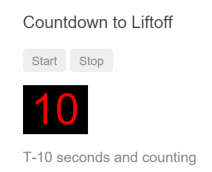Angular元件間怎麼進行互動?常用互動方法介紹
2021-06-24 13:00:26

【相關教學推薦:《》】
1、通過輸入型繫結把資料從父元件傳到子元件
child.component.ts
export class ChildComponent implements OnInit {
@Input() hero: any;
@Input('master') masterName: string; // 第二個 @Input 為子元件的屬性名 masterName 指定一個別名 master
constructor() { }
ngOnInit(): void {
}
}child.component.html
<div style="background-color: #749f84">
<p>child works!</p>
<h3>{{hero?.name}} says:</h3>
<p>I, {{hero?.name}}, am at your service, {{masterName}}.</p>
</div>parent.component.ts
export class ParentComponent implements OnInit {
hero = {name: 'qxj'}
master = 'Master'
constructor() {
}
ngOnInit(): void {
}
}parent.component.html
<app-child [hero]="hero" [master]="master"></app-child>
2、父元件監聽子元件的事件
child.component.ts
export class ChildComponent implements OnInit {
@Input() name: string;
@Output() voted = new EventEmitter<boolean>();
didVote = false;
vote(agreed: boolean) {
this.voted.emit(agreed);
this.didVote = true;
}
constructor() { }
ngOnInit(): void {
}
}child.component.html
<h4>{{name}}</h4>
<button (click)="vote(true)" [disabled]="didVote">Agree</button>
<button (click)="vote(false)" [disabled]="didVote">Disagree</button>parent.component.ts
export class ParentComponent implements OnInit {
agreed = 0
disagreed = 0
voters = ['Narco', 'Celeritas', 'Bombasto']
onVoted(agreed: boolean) {
agreed ? this.agreed++ : this.disagreed++
}
constructor() {
}
ngOnInit(): void {
}
}parent.component.html
<h2>Should mankind colonize the Universe?</h2>
<h3>Agree: {{agreed}}, Disagree: {{disagreed}}</h3>
<app-child *ngFor="let voter of voters" [name]="voter" (voted)="onVoted($event)"></app-child>
3、父元件與子元件通過本地變數互動
父元件不能使用資料繫結來讀取子元件的屬性或呼叫子元件的方法。但可以在父元件模板裡,新建一個本地變數來代表子元件,然後利用這個變數來讀取子元件的屬性和呼叫子元件的方法,如下例所示。
子元件 CountdownTimerComponent 進行倒計時,歸零時發射一個導彈。start 和 stop 方法負責控制時鐘並在模板裡顯示倒計時的狀態資訊。
child.component.ts
export class ChildComponent implements OnInit, OnDestroy {
intervalId = 0
message = ''
seconds = 11
clearTimer() {
clearInterval(this.intervalId)
}
ngOnInit() {
this.start()
}
ngOnDestroy() {
this.clearTimer()
}
start() {
this.countDown()
}
stop() {
this.clearTimer()
this.message = `Holding at T-${this.seconds} seconds`
}
private countDown() {
this.clearTimer()
this.intervalId = window.setInterval(() => {
this.seconds -= 1
if (this.seconds === 0) {
this.message = 'Blast off!'
} else {
if (this.seconds < 0) {
this.seconds = 10
} // reset
this.message = `T-${this.seconds} seconds and counting`
}
}, 1000)
}
}child.component.html
<p>{{message}}</p>parent.component.ts
export class ParentComponent implements OnInit {
constructor() {
}
ngOnInit(): void {
}
}parent.component.html
<h3>Countdown to Liftoff (via local variable)</h3>
<button (click)="child.start()">Start</button>
<button (click)="child.stop()">Stop</button>
<div class="seconds">{{child.seconds}}</div>
<app-child #child></app-child>
4、父元件呼叫@ViewChild()
這個本地變數方法是個簡單便利的方法。但是它也有侷限性,因為父元件-子元件的連線必須全部在父元件的模板中進行。父元件本身的程式碼對子元件沒有存取權。
如果父元件的類需要讀取子元件的屬性值或呼叫子元件的方法,就不能使用本地變數方法。
當父元件類需要這種存取時,可以把子元件作為 ViewChild,***注入***到父元件裡面。
countdown-parent.component.ts
import {AfterViewInit, Component, ViewChild} from '@angular/core'
import {ChildComponent} from '../child/child.component'
@Component({
selector: 'app-parent-vc',
template: `
<h3>Countdown to Liftoff (via ViewChild)</h3>
<button (click)="start()">Start</button>
<button (click)="stop()">Stop</button>
<div class="seconds">{{ seconds() }}</div>
<app-child></app-child>
`,
})
export class CountdownParentComponent implements AfterViewInit {
@ViewChild(ChildComponent)
private timerComponent: ChildComponent
seconds() {
return 0
}
ngAfterViewInit() {
// Redefine `seconds()` to get from the `ChildComponent.seconds` ...
// but wait a tick first to avoid one-time devMode
// unidirectional-data-flow-violation error
setTimeout(() => {
this.seconds = () => this.timerComponent.seconds
}, 0)
}
start() {
this.timerComponent.start()
}
stop() {
this.timerComponent.stop()
}
}更多程式設計相關知識,請存取:!!
以上就是Angular元件間怎麼進行互動?常用互動方法介紹的詳細內容,更多請關注TW511.COM其它相關文章!